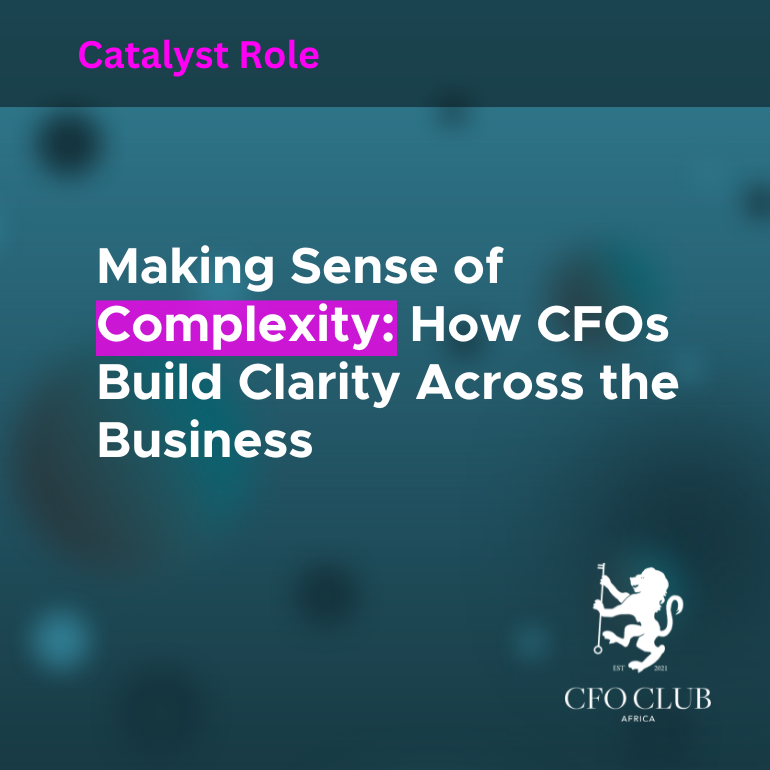Making Sense of Complexity: How CFOs Build Clarity Across the Business
Making Sense of Complexity: How CFOs Build Clarity Across the Business
In today’s fast-paced and data-rich environment, the role of the Chief Financial Officer has evolved into something far more dynamic than traditional financial oversight. While accuracy, control, and compliance remain core responsibilities, the modern CFO is also a strategic communicator — someone who can turn financial complexity into actionable insight.
The ability to simplify complex ideas and communicate them clearly across diverse teams is no longer a soft skill; it’s a critical leadership function. It’s what allows financial strategy to be understood, adopted, and executed throughout the organisation.
From Financial Fluency to Organisational Alignment
Not everyone in the business speaks the language of finance. Yet every part of the business is affected by it. A pricing change, a shift in margin, or a cash flow challenge doesn’t just live in spreadsheets — it lives in decisions made by teams in marketing, sales, HR, operations, and beyond.
The CFO, therefore, becomes a translator of value. Turning figures into foresight. Ensuring that teams understand not just what the numbers say, but what they mean for their work, their budgets, and their goals.
This isn’t about oversimplifying or glossing over the details. It’s about communicating in a way that resonates — grounding abstract financial principles in the daily realities of the people who need to act on them.
Clarity as a Strategic Tool
Complexity is inevitable, but confusion is not. The CFO’s challenge is to hold complexity in one hand and offer clarity with the other. This often involves shifting the way we present information: from dense tables to clear visual dashboards, from technical jargon to practical explanations, from isolated figures to integrated narratives.
For example, rather than reporting that revenue is down 8%, a CFO might say: “Client onboarding delays in Q2 caused an 8% revenue drop — indicating a bottleneck we need to address in operations.” That shift from abstract data to operational relevance makes all the difference.
When clarity is prioritised, insights become usable. Teams feel informed, engaged, and equipped to respond. And that sense of alignment often leads to better decision-making and stronger execution across the board.
Different Messages for Different Audiences
The board, the executive team, and operational staff each require different levels of financial detail and different types of framing. One of the most effective ways CFOs can simplify complexity is by segmenting their communication based on audience needs.
Board members want strategic context and risk oversight. Divisional leaders need practical levers to manage costs and optimise performance. Employees want to understand how business performance affects job security, bonuses, or future investment in resources.
Effective CFOs tailor their message for each group — not by changing the facts, but by changing the focus.
Telling the Story Behind the Numbers
People don’t remember figures — they remember meaning. This is why storytelling is becoming an essential part of the CFO’s toolkit. Numbers alone can be dry and disconnected. But when they’re embedded in a clear story — a shift in customer behaviour, a supply chain disruption, a market opportunity — they become much easier to understand and respond to.
Financial storytelling doesn’t require dramatics. It requires relevance. A good story connects past performance to future action. It highlights risk, explains causality, and gives people a reason to care about the numbers in front of them.
Trust, Transparency, and Leadership
Clear communication builds trust — and trust is the bedrock of strong leadership. When people understand what you’re saying, they’re more likely to trust your judgement and follow your lead. In a world where data is abundant but attention is limited, simplicity earns credibility.
This is especially important in times of uncertainty or change. Whether managing cost constraints, navigating market volatility, or preparing the business for growth, people look to the CFO for steady guidance. And that guidance must be delivered in a way that is accessible, transparent, and forward-looking.
Clarity Enables Execution
At CIBA, we continue to see the evolving role of finance leaders — not just as technical experts, but as enablers of business performance and custodians of strategic clarity. The ability to simplify complexity is a key part of that evolution. It allows CFOs to engage, align, and mobilise the people around them.
In the end, clarity is not a soft skill or a communication trick. It is a tool of execution. It turns insight into action. And in the hands of a capable CFO, it becomes a force that moves the entire organisation forward — with focus, confidence, and shared understanding.





